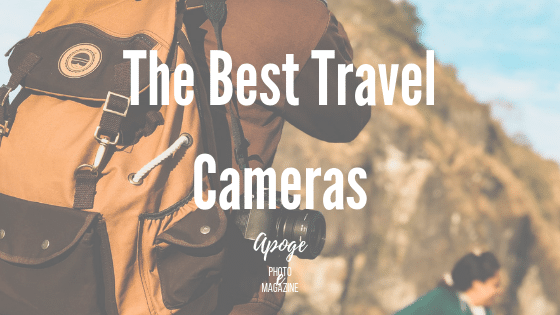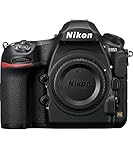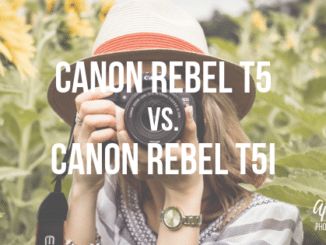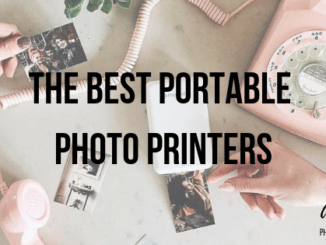
Travel photography is a broad and diverse genre, potentially encompassing everything from landscapes and still life photography through to street shots and portraits. This means that the best DSLR camera for travel photography will vary considerably depending on exactly which travel photographer you ask. And whereas the best DSLRs for producing, say, landscapes or portraits are likely to differ significantly in the features they offer, a good camera for travel photography may need to provide the best of both these worlds.
But does such a versatile DSLR actually exist? And if not, which features are truly essential for travel photography, and which can you live without? Our guide to choosing the best DSLR camera for travel photographers will set you on the right track.
What Makes a Good Travel Camera?
Theoretically, you could take travel photos with any camera, in practice some DSLRs are going to be better suited to the job than others. Let’s take a look at some of the main criteria to consider when choosing the best DSLR for your own travel photography needs.
Weight
This is pretty obvious: nobody wants to haul a massive brick of a camera around with them for days or weeks on end if they can help it. This doesn’t mean you should only take your smartphone with you, but you should at least pay attention to the weight of any camera you are considering purchasing – without forgetting to factor in the additional weight of any lenses or other accessories that you might also need to bring along with you.
Size
Like weight, bulk can be a significant deciding factor when choosing the best DSLR for your trip. The bigger the camera, the less room you will have left for packing other essential items, such as extra lenses, a tripod, flash, or gummy bears.
Durability
Life on the road (or even off it) can be punishing. You may be physically up to the hardships, but is your camera?
What do we mean when we say that a camera is durable? Firstly, the body is going to be very strongly built: not some plastic trash that will crack open if accidentally swung against a rock while crossing a mountain stream. Similarly, dials and buttons should not be at risk of snapping off or becoming stuck, but instead must be of excellent quality and strongly attached to the body of the camera.
Depending on your destination, travel can also mean dirt, dust, sand, salt water, cold, heat, humidity, and a whole host of other dangers and annoyances that are like kryptonite to consumer electronics. On our first foreign adventure, my girlfriend and I packed an SLR each. We were young and naive: her camera was stolen out of her bag only forty-eight hours into the two-month trip, and mine permanently jammed when sand got into the film-advance lever a couple of days later. I had only shot half a roll.
You may not need a camera that can deal with subzero temperatures or one that comes coated in kevlar, but at the very least a good travel camera will probably offer a degree of weatherproofing so it can withstand the basic elements. Nature can be as depressingly predictable as it is unpredictable; the rain falls, the wind blows, the dust settles, and delicate digital circuitry goes on the blink.
Convenience and Ease of Use
Travel photography is the antithesis of shooting in a studio: you can’t ask models to repeat a pose; photo opportunities won’t wait while you futz around choosing the best camera settings; there’s no assistant to adjust your lighting setup, and in any case, the sun would be unlikely to cooperate.
Instead, you’re on your own, and you have to work fast or lose the shot. This means that you need a camera that:
● Is comfortable to hold
● Has intelligently laid-out controls
● Offers quick access to all parameters
● Ideally also allows you to customize function buttons
Speed
To a certain degree, this depends on your shooting style. Some photographers shoot a single frame and walk away having nailed it in one. With others, the whirring of the shutter serves as a soundtrack while they work. Whatever gets you the results you want.
But if you fall more into the latter category of photographer, you will need a camera capable of reeling off a lot of frames in a short space of time: 10 fps vs. 3fps can make a lot of difference, as can a camera’s RAW buffer.
You’ll also want to be certain that as many of those images as possible are pin sharp. Clearly, this means fast and accurate autofocus.
Battery Life
Having woken at 2 AM to begin your ascent of Bali’s Mount Agung volcano, you will not want to reach the crater just in time for a breathtaking golden sunrise only to discover that your camera’s battery indicator is flashing urgently in the predawn glow. Clearly, if you will be spending much time out in the wild, then you’ll want to pack an extra battery anyway. But you can also help your camera to help you by choosing a model that offers consistently good battery life.
Connectivity
While there’s a somewhat convincing argument that features such as WiFi, Bluetooth, and various proprietary image transfer methods are mostly just unnecessary luxuries for those too lazy to bother using a card-reader, travel photography is one area where this thesis quickly finds itself upon shaky ground. Certainly, the ability to backup images on a hard-disk or cloud server while on the move strikes me as very handy. And for those wanting to regularly post their exploits on social media, being able to ping a few images across from your camera to your phone at whim is not to be scoffed at either.
How important such features are to you is something you will have to work out for yourself. Most top-end DSLRs will offer some form of connectivity, while many entry-level ones do not (at least not without the additional purchase of a costly WiFi accessory).
Image Quality
If you are serious about travel photography, you will not want to go to the trouble of traveling half the way around the world, spending who knows how much money, only to come home with some grainy little 8 megapixel JPEGs of your trip.
Choosing the camera with the best image quality possible within your budget should always be the number one criteria when purchasing a DSLR for any purpose, so this is not a point that should even need mentioning. However, we add it here to be sure that, in the excitement of searching for the ultimate travel photography camera, we don’t lose sight of the most important thing of all: making good pictures.
And nothing will hinder your quest to shoot good pictures more than a camera incapable of producing good quality images. So once again, purchase the best DSLR camera you can afford for image quality. Primarily this means choosing a camera with:
● A large image sensor
● A high pixel count (number of megapixels)
● A wide dynamic range
● Minimal digital noise
● Good performance at higher ISOs
Compromise
Of course, the reality is that not all of the above criteria are entirely compatible. A truly durable camera will have a metal body, rather than a plastic one; but this will likely also make it heavy. Similarly, a camera with a high pixel count and a large sensor will produce outstanding images; but will probably be capable of much slower burst shooting rates than those offering less megapixels and will likely also exhibit more digital noise.
You can’t have it all, so one of the most important steps in choosing a good travel camera is learning to compromise. What’s important is that you make this compromise in the right places. And here it helps to have an idea of the kind of photographs you want to produce, and the conditions under which you will likely be producing them.
If you’ve already worked out that you’re more into approaching people and asking to take their portrait in a quiet side street than capturing the fast-paced hubbub of a bazaar at night, you already know that fast ISOs and rapid burst shooting rates are probably lower down your list of priorities than image resolution. Or if the main reason for traveling is to check out incredible wildlife in remote locations, then you’ll probably be willing to accept a slightly smaller sensor size and pixel count in return for lightening-fast autofocus and breakneck continuous shooting speeds in a more portable body.
In short, when choosing the best DSLR for your trip, something will likely have to give. Just be sure that you fully understand where that compromise is being made and that you are willing to live with the trade-off. Above all, don’t leave this decision to chance just because somebody somewhere told you that the EOS-thingamijig or the Nikon D-somethingorother is hands down the best DSLR camera right now. There’s no such thing.
In fact, there’s not even an overall best DSLR camera for travel photography. There’s simply the best DSLR camera for you and your travel photography. Hopefully, it will be one of our following recommendations.
5 of the Best DSLR Cameras for Travel Photography
#1. Canon EOS 6D Mark II
Pros:
+ Full-frame image sensor
+ 26.2-megapixels
+ Vari-angle touch screen
+ Dual Pixel CMOS AF
+ Good ergonomics
+ Great connectivity
+ Weather sealed
Cons:
– Single HD card slot
– No 4K video
Offering excellent image quality, combined with great usability, and a reassuring degree of protection against the elements, the Canon EOS 6D Mark II provides pretty much everything the average travel photographer will need. And at a very accessible price point.
It’s also unusually small and lightweight for a full-frame DSLR. Indeed, if you were considering going for a smaller APS-C camera in order to keep bulk to a minimum, you may want to rethink: the 6D Mark II is not much bigger than an entry-level DSLR, and yet offers far superior image quality to the cropped-sensor alternatives.
Between the original 6D and the Mark II Canon has significantly bumped up the number of AF points – from just nine on the first iteration to an impressive 45 cross points on the 6D II – making autofocus noticeably faster. The camera’s burst shooting rate has been accelerated too, increasing from 4.5 fps to a perfectly respectable 6.5 fps.
The camera is very well designed and a pleasure to hold. On top of which, the layout of buttons is highly intuitive, with all controls easily within reach and their positions simple to memorize. What’s more, the 6D II further secures its credentials as one of the best DSLR cameras for travel photography by offering excellent connectivity in the form of GPS, WiFi, Bluetooth, and NFC.
For travel photographers, who may need to shoot a lot of frames before getting a chance to backup their files, perhaps the biggest turn off will be the lack of a second HD card slot. Meanwhile, some noticeable noise at higher ISO settings means that the 6D Mark II is not the absolute best choice of DSLR for low-light shooting.
Also, if video is a major priority for you, you may well want to look elsewhere, as there is no 4K capability with the 6D II either. Although, for more casual video shooters, full HD at up to 60 fps and in-camera five-axis digital movie stabilization will likely be more than sufficient.
- 26.2 Megapixel Full frame CMOS Sensor
- Optical Viewfinder with a 45 point All Cross type AF System. Compatible Lenses: Canon EF lenses (excluding EF S and EF M lenses)
- Dual Pixel CMOS AF with Phase detection & Full HD 60p
- DIGIC 7 Image Processor, ISO 100 40000. GPS, Wi Fi, NFC and Bluetooth low energy
- Vary angle Touch Screen, 3.0 inch LCD
#2. Nikon D850
Pros:
+ Full-frame image sensor
+ 45.7-megapixels
+ 100% optical viewfinder
+ 7 fps burst rate (9 fps with additional grip)
+ 4K video
+ Dual SD card slots
+ 3.2” tilting touch screen
Cons:
– Expensive
– Big and heavy
The Nikon D850 is probably the closest you’re going to get right now to a satisfactory compromise between durability, speed, features, and image quality in a top-end DSLR. This makes it a great all-around workhorse capable of producing truly beautiful images under any circumstances: exactly what’s required when heading out into the unknown.
Unusually for a camera that offers such a high pixel count, the D850 keeps digital noise well under control. Dynamic range, too, is excellent. And, offering the best of both worlds, the D850’s outstanding resolution is complemented by pro-level autofocus and a more than acceptable continuous shooting rate. To be sure, it’s not the fastest camera out there on either front, but it certainly is one of the fastest to do so while producing such high-quality images. And with full-frame 4K video, users are left wanting for very little on the motion side of things either.
The catch? Well, if the D850 narrowly misses out on our number one spot, it’s because it is neither compact nor cheap. This is not a camera for the casual snapping of vacation shots, but a serious machine for serious photographers.
No matter what kind of travel photography situation you may find yourself in, and no matter the terrain, the D850 will be up to the challenge. The question is whether you are: not everyone will want to carry such a big and heavy camera around with them the whole time, nor spend quite so much money for the privilege of doing so.
- Nikon designed back side illuminated (BSI) full frame image sensor with no optical low pass filter
- 45.7 megapixels of extraordinary resolution, outstanding dynamic range and virtually no risk of moiré
- Up to 9 fps1 continuous shooting at full resolution with full AF performance
- 8K6 and 4K time lapse movies with new levels of sharpness and detail; File system : DCF 2.0, Exif 2.31, PictBridge
- Tilting touchscreen, Focus Shift shooting mode, outstanding battery performance and much more; Total Pixels: 46.89 million
#3. Nikon D3400
Pros:
+ Great price
+ 24.2-megapixel image sensor
+ Small and lightweight
+ Full HD 1080p video at 60 frames per second
+ 5 fps burst shooting rate
+ Bluetooth
+ No anti-aliasing filter
Cons:
– Not full-frame
– No internal WiFi
– 3-inch screen is non-touch, non-articulating
– Only 95% viewfinder coverage
– Only 11 AF points
– Plasticy build
– Slow RAW buffer
– No weather sealing
The Nikon D3400 is undoubtedly small and light, but with its plastic casing, it won’t be winning any awards for a rugged build. While I wouldn’t hesitate to travel with one, I’d be a little worried about throwing it in the bottom of a bag for too long or leaving it swinging around my neck as I scale challenging terrain.
Mind you, if your Nikon is only going to end up being swept away in a freak landslide, or unceremoniously dumped on a river bed while out kayaking, better it’s one with a sub-$500 price tag than something like the D850 (above).
When it comes to travel photography, a camera that is both cheap and simple to use is not to be sniffed at. This is a DSLR you can take anywhere, safe in the knowledge that you’re approachable and non-intimidating. And unlike the more pro-level options, there’s not too much risk that anyone will accuse you of being a journalist or a spy when you do pull the D3400 out of your bag.
I mean, who would use such a basic looking toy-camera for “serious” photography anyway?
Well, you’d be surprised. Sure, the D3400’s sensor is relatively small, and its features are rather limited. But with 24 megapixels and no anti-aliasing filter, this is a camera capable of producing quite shockingly good images for the price. You probably wouldn’t want to blow them up as life-sized enlargements, but even for medium sized prints, RAW files shot using the D3400 will likely pass muster.
OK, with so few AF points you can almost count them all on your fingers, the D3400’s autofocus isn’t exactly state-of-the-art. And while the 5 fps burst shooting rate isn’t so bad, the image buffer soon fills up when capturing RAW, so it’s not a great choice of camera for those who like to shoot first and then work out what the hell they wanted to photograph later.
Nonetheless, the Nikon D3400 is a stripped back, basic little camera that punches well above its weight in terms of image quality. On top of which, it’s small, portable, and doesn’t cost the earth, so if you were to lose or damage it you’d probably recover financially. These are all pretty appealing features in a travel camera.
For those looking for an even cheaper option, the D3400’s predecessor, the Nikon D3300, is arguably an even better deal; offering as it does the same great little image sensor for a considerably discounted price. The only significant differences are the D3300’s lack of Bluetooth and shorter battery life.
- SnapBridge Bluetooth Connectivity
- 24.2MP DX Format CMOS Sensor
- EXPEED 4 Image Processor
- No Optical Low Pass Filter. Bluetooth Specification Version 4.1. Wi Fi Functionality Eye Fi Compatible
- Native ISO 100 25600; 5 fps Shooting. Compatability information: C firmware v. 1.10 and later ( released August 31, 2016 )
#4. Pentax K-1 Mark II
Pros:
+ Full-frame
+ 36.4-megapixels
+ Strong build
+ Weather sealing
+ Good controls
+ Built-in stabilization
+ 3.2” vari-angle LCD
+ WiFi and GPS
+ 100% optical viewfinder
+ Dual HD card slots
Cons:
– No 4K video
– 4.4 fps burst rate
– Non-touch LCD
– Big and heavy
With a high degree of weather sealing and rugged alloy construction, the Pentax K-1 Mark II is one of the most durable options we look at here. Making it well-suited to being taken on more extreme adventure travels. And with an articulating rear screen and an optical viewfinder providing pretty much 100% coverage, it’s something of a photographer’s DSLR too.
While the K-1 II is more a camera for slower-moving landscape and portrait photographers than for rapid-action shooters, it should be noted that resolution is not as high as with top-class DSLRs such as the Nikon D850. But then again, nor is the price tag. And those looking for a true all-rounder – offering both maximum speed and image quality – will need to spend a great deal more.
Nonetheless, RAW files captured using the K-1 Mark II display both impressive sharpness and excellent dynamic range, and a full-frame 36 MP sensor is never going to be anything short of impressive. Meanwhile, the camera’s 33-point phase detect autofocus does a good enough job of locking onto the action in most shooting situations.
The K-1 Mark II employs Pentax’s sophisticated SR II shake-reduction system, helping to keep hand-held shots crisp even at low shutter speeds. However, SR II also goes a lot further than this, by allowing users to select an anti-aliasing mode when there is a risk of moiré, or to engage what Pentax calls the ASTROTRACER function. This permits long exposures of the night sky while maintaining stars as pinpoints of light rather than motion-blurred lines.
Although the K-1 Mark II makes for a compelling stills camera, it’s not such a great choice for videographers: while it can manage full HD video at up to 60i/50i/30p/25p/24p, there’s no 4K. Also, at 4.4 fps, the camera’s burst rate is hardly any better than DLSRs that cost a quarter of the price. Finally, those who are weight-conscious may not find this the best choice of travel DSLR either, as its sturdy build translates into quite a hefty piece of kit, especially if coupled with a similarly bulky lens.
- 36 MP AA filter less shake reduction sensor with APS C crop mode for compatibility with Pentax k mount lenses
- Hand Held Pixel Shift Resolution that allows 4 images to be complied into an superior image with increased color rendition and sharpness
- Engine Accelerometer for reduced image noise, faster focusing and increased image sharpness
- Magnesium Alloy, Weather Resistant body for every demanding situation
- Astro tracer extended exposure mode with reduced star trails
#5. Nikon D610
Pros:
+ Full frame
+ 24.3-megapixel sensor
+ Wide dynamic range
+ Weather-sealed
+ 2 SD card slots
+ 3.2″ LCD
+ 100% optical viewfinder
+ Simple controls
+ 2nd top LCD
+ 39 AF points
+ 6 fps burst shooting rate
Cons:
– No WiFi
– Made of plastic
– AF points all in center of the frame
– Non-articulating LCD
The Nikon D610 may be getting on a little in years now, but it’s still a great little camera that will give Canon’s EOS 6D Mark II (above) a good run for its money. It’s not flashy, and it’s not gimmicky, it’s just a good, solid DSLR offering great image quality and decent features in a pretty well-built body. It wouldn’t be any better prepared for life on the road if its name was Marco Polo.
Many more recently released DSLRs will shoot at higher ISOs, they’ll come with more AF points, and will likely be better built. But few of them will be anywhere near as cheap as the D610. Instead, what you get here is a great full-frame image sensor, wide dynamic range, two SD slots, a 100% optical viewfinder, and weather sealing. Budding travel photographers could do a lot worse.
- 24.3MP full frame CMOS sensor
- 39 point AF system (9 cross type)
- ISO 100 6400 expandable up to 25,600
- 3.2 inch LCD with 921,000 dots
- 1080/30p, 25p or 24p or 720/60p, 50p or 30p HD video (MPEG 4 AVC/H.264)
Final Thoughts
For many travel photographers, versatility will be top priority: shooting Mayan ruins at dawn, daily life at local markets at lunchtime, and mountain landscapes at sunset. This calls for a well-rounded, multi-purpose tool, capable of dealing with whatever photo ops and surprises a trip may throw at you.
And yet, as every seasoned traveler knows, there’s nothing more miserable than being weighed down from over-packing. Many photographers will be happy to compromise on functions in order to keep bulk and weight to a minimum so as not to ruin their trip.
For others, though, the whole reason for traveling in the first place will be in order to take pictures. Here it would be better to compromise your packing in some other areas (fewer clothes, no inflatable unicorn beach-floater) and go with the camera that best suits your photographic needs and budget, without worrying too much about size and weight.
Just as even the most luxurious Winnebago is unlikely to offer the same degree of comfort as an actual brick and mortar home, the best cameras for travel photography will likely involve a degree of compromise. It’s up to you to work out precisely where you’re willing to make these concessions.
Travel photography is quite a broad category, and no two photographers will approach it in exactly the same way. Deciding which is the best DSLR camera to take with you means first understanding the kinds of photos you hope to shoot while on the road.














Leave a Reply